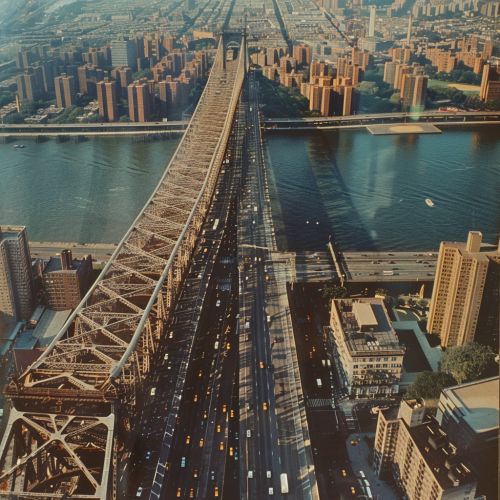Triborough Bridge
History
The Triborough Bridge, officially known as the Robert F. Kennedy (RFK) Bridge, is a complex of bridges and elevated expressway viaducts in New York City. The bridges link the boroughs of Manhattan, Queens, and the Bronx. The viaducts cross Randalls and Wards Islands, which were previously two islands but are now joined by landfill.


The Triborough Bridge project started in 1929 but was stalled by the Great Depression. Construction finally began on October 25, 1933, under the guidance of the Public Works Administration (PWA). The project was a major part of the New Deal initiative, aimed at providing employment during the economic downturn. The bridge was opened to traffic on July 11, 1936. The total cost of the project was more than $60 million, a staggering sum at the time.
Design and Construction
The Triborough Bridge is not a single span, but rather a complex of three separate bridges, a viaduct, and fourteen miles of approach roads connecting three of New York City's boroughs. The bridges are suspension, vertical lift, and fixed spans. The entire complex was designed by chief engineer Othmar H. Ammann, architect Aymar Embury II, and landscape architect Gilmore D. Clarke.
The Manhattan leg of the bridge is a suspension bridge with a central span of 1,380 feet. The Queens leg is a vertical lift bridge with a central span of 1,040 feet, and the Bronx leg is a fixed span of 383 feet. The vertical clearance of the lift bridge can be increased from 55 feet to 135 feet by raising the roadway.
The construction of the bridge was a massive undertaking, involving thousands of workers and innovative construction techniques. The project was completed in just three years, a testament to the engineering prowess and efficient management of the time.
Operation and Maintenance
The Triborough Bridge is operated and maintained by the Metropolitan Transportation Authority (MTA). The bridge carries Interstate 278 (I-278) and New York State Route 900G across the East River. The complex is a critical part of New York City's transportation infrastructure, carrying over 200,000 vehicles daily.
Tolls are collected in both directions on the bridge. The MTA uses both cash and electronic toll collection systems. The toll revenue is used to fund the operation and maintenance of the bridge, as well as other MTA facilities.
Impact and Significance
The Triborough Bridge has had a significant impact on the development and growth of New York City. It has facilitated the movement of people and goods between the boroughs, contributing to the economic vitality of the region. The bridge has also influenced the urban landscape, shaping the development of neighborhoods and communities.
Despite its significance, the bridge has also been a source of controversy. Its construction displaced numerous residents and businesses, and its operation has been criticized for contributing to air pollution and traffic congestion. Nevertheless, the Triborough Bridge remains a vital part of New York City's transportation system and a symbol of the city's resilience and ambition.
